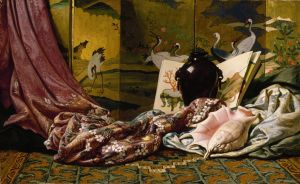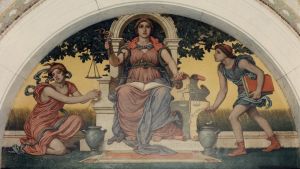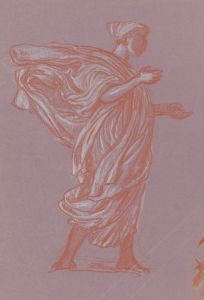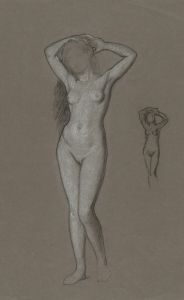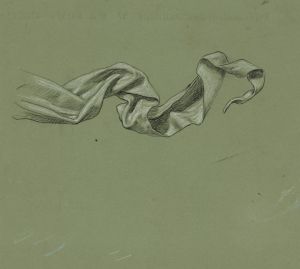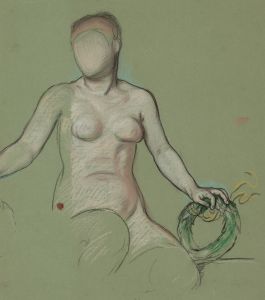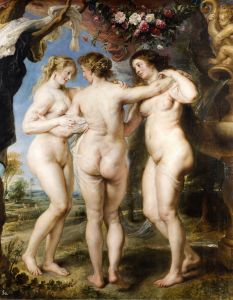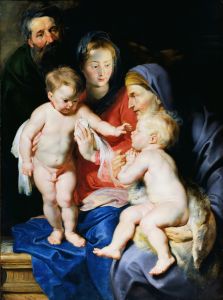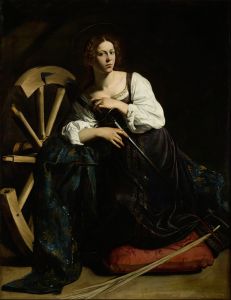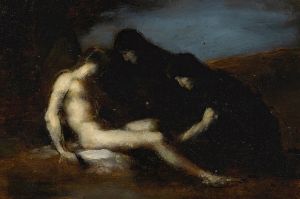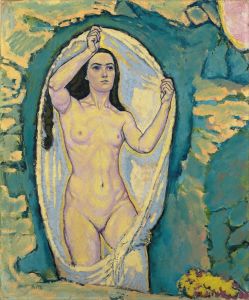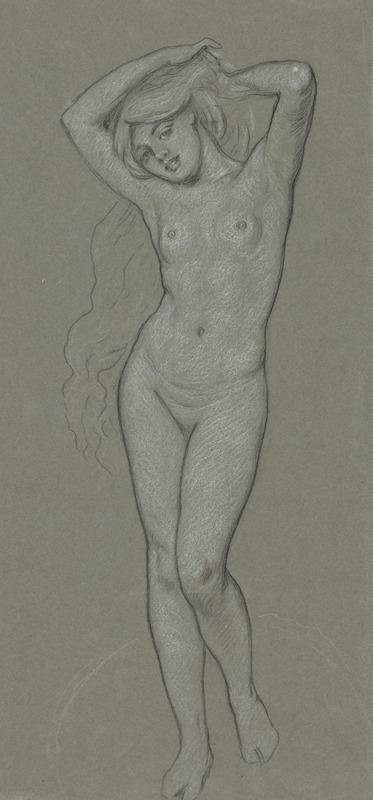
Study for Figure of Venus
A hand-painted replica of Elihu Vedder’s masterpiece Study for Figure of Venus, meticulously crafted by professional artists to capture the true essence of the original. Each piece is created with museum-quality canvas and rare mineral pigments, carefully painted by experienced artists with delicate brushstrokes and rich, layered colors to perfectly recreate the texture of the original artwork. Unlike machine-printed reproductions, this hand-painted version brings the painting to life, infused with the artist’s emotions and skill in every stroke. Whether for personal collection or home decoration, it instantly elevates the artistic atmosphere of any space.
Elihu Vedder's Study for Figure of Venus is a preparatory work created by the American artist Elihu Vedder (1836–1923). Vedder was a prominent figure in the Symbolist movement, known for his mystical and allegorical themes, as well as his detailed and imaginative compositions. This particular study reflects his interest in classical mythology and the human form, which were recurring subjects in his oeuvre.
The artwork is a study, meaning it was likely created as a preliminary exploration of form, composition, or concept for a larger or more finished piece. It depicts Venus, the Roman goddess of love and beauty, a subject that has inspired countless artists throughout history. Vedder’s interpretation of Venus aligns with his Symbolist tendencies, focusing on the idealized human figure and imbuing it with a sense of otherworldly grace.
The medium of the study is not definitively documented, but Vedder often worked in pencil, charcoal, or chalk for his preparatory sketches. These materials allowed him to experiment with shading, texture, and anatomical precision. The study demonstrates Vedder's skill in rendering the human figure, showcasing his ability to capture both physical beauty and an ethereal quality that aligns with the mythological nature of the subject.
Elihu Vedder spent much of his career in Italy, where he was deeply influenced by the classical art and architecture of the region. This environment likely played a role in his choice of Venus as a subject, as well as in the stylistic elements of the study. His time in Italy also connected him to a broader network of artists and intellectuals who were exploring similar themes of mythology, symbolism, and the human condition.
While Study for Figure of Venus is not as widely known as some of Vedder's other works, such as his illustrations for Edward FitzGerald's The Rubaiyat of Omar Khayyam, it remains an example of his dedication to classical themes and his meticulous approach to art-making. The study provides insight into Vedder's creative process and his ability to merge technical skill with imaginative vision.
Further details about the specific context or purpose of this study are not readily available, as it does not appear to be directly tied to a well-documented larger project or commission. However, it stands as a testament to Vedder's artistic exploration and his engagement with timeless themes of beauty and mythology.





